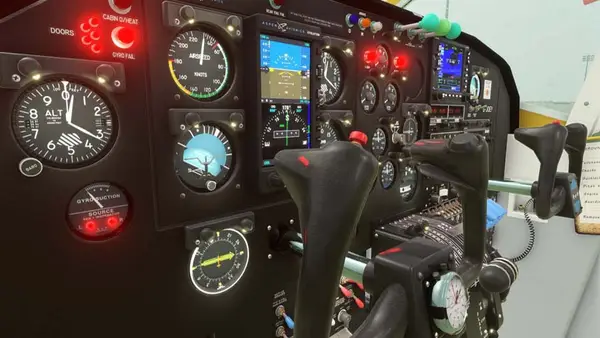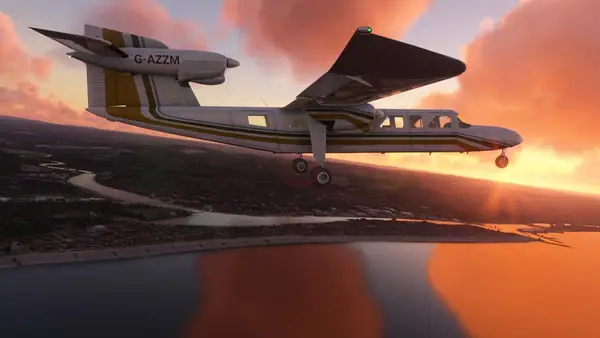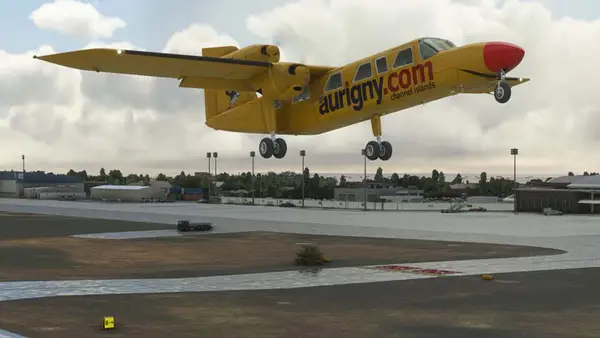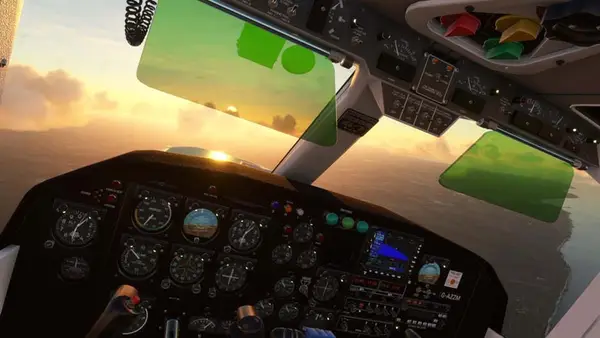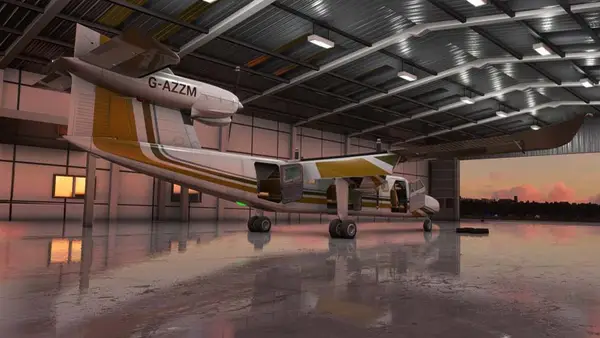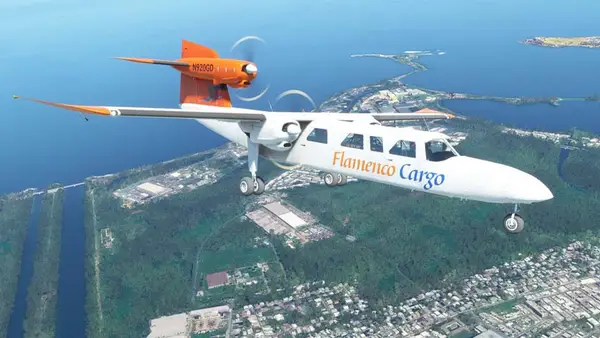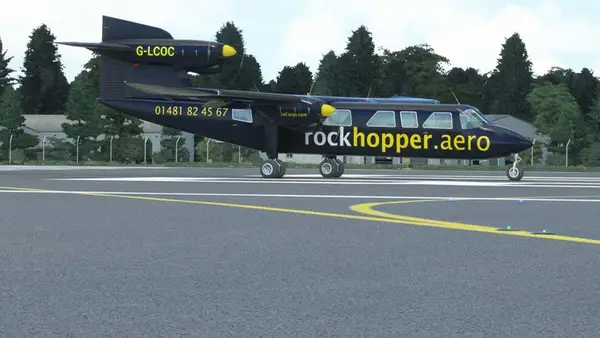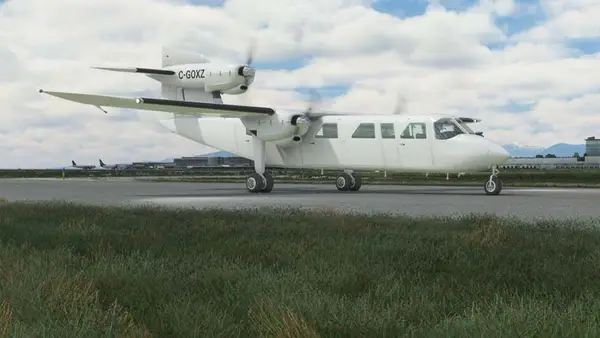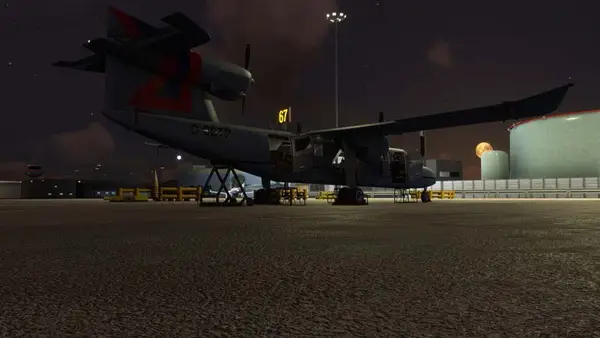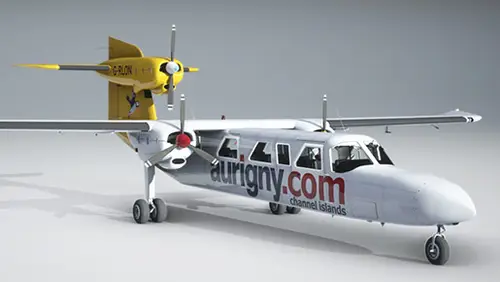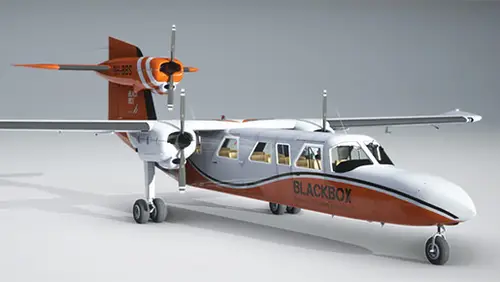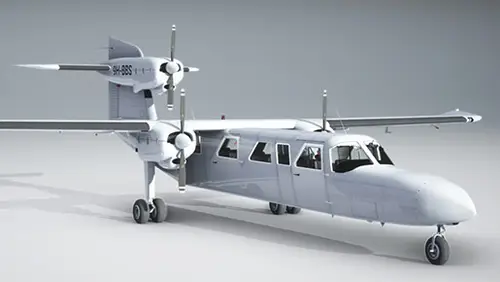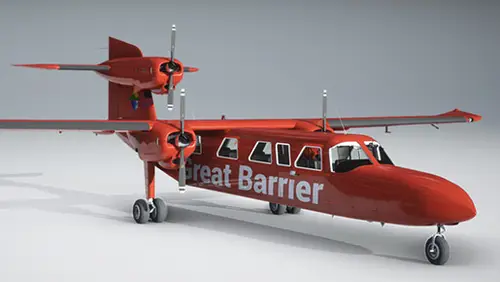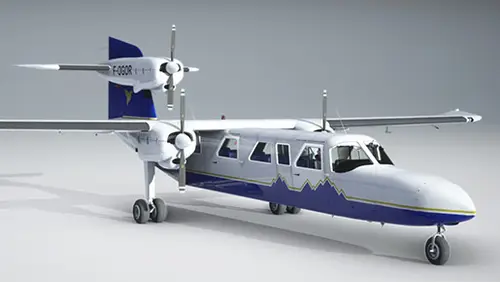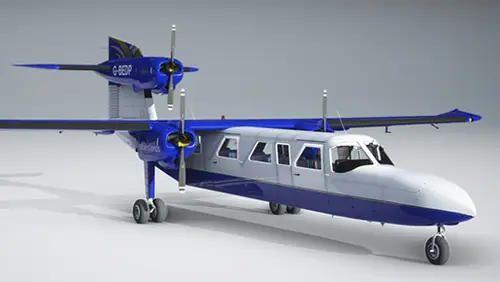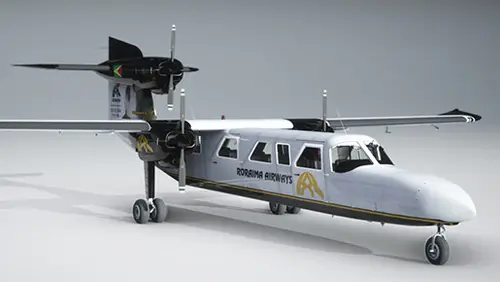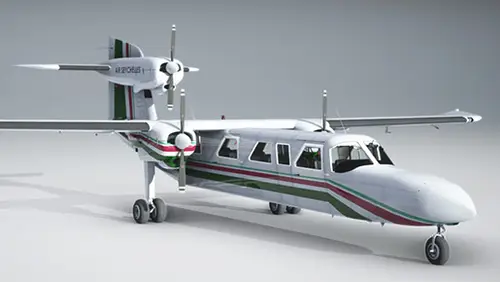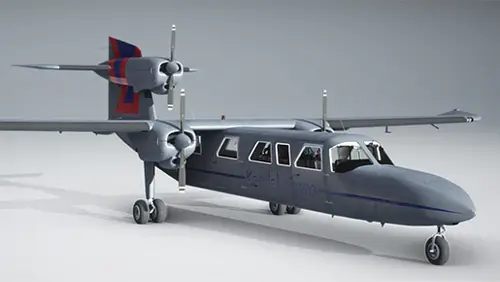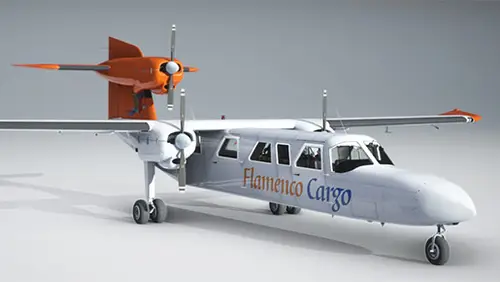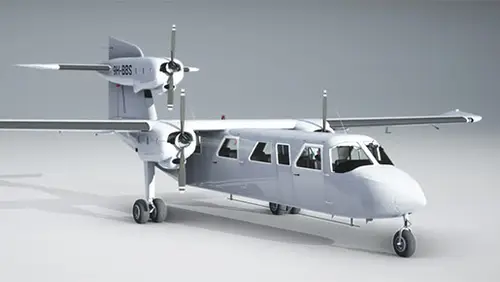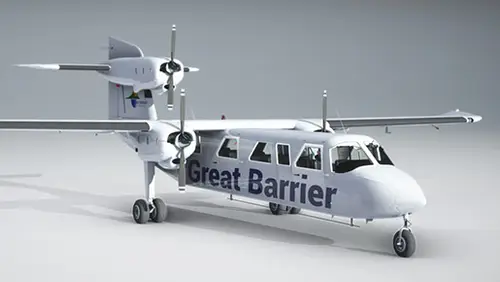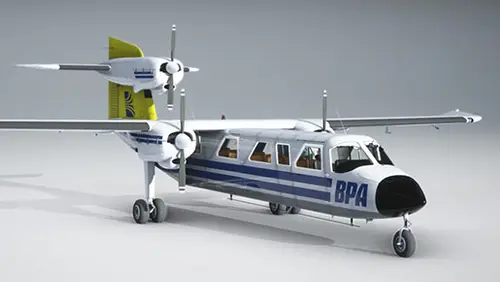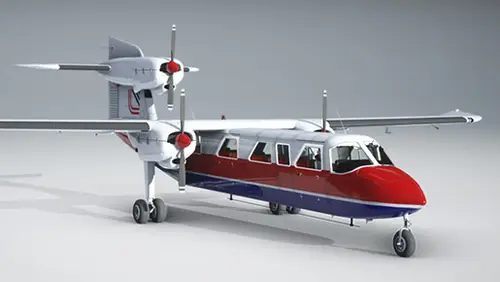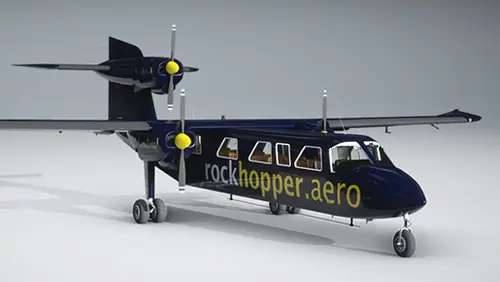- USD 14.99
- -50%
- USD 14.99
- USD 7.49
- Sale Ends: January 7 2026 6:00 PM +00:00
- View more offers at FS Addon Compare
- Added: June 10, 2022
- Updated: February 3, 2025
The Britten-Norman BN2-2A Mk III-2 Trislander. First manufactured in the early 1970's. Registration number G-JOEY operated by Aurigny Air Services from June of 1979 to June of 2015. Based out of Guernsey Airport on the Channel Islands of the English Channel. G-JOEY, painted a bright yellow with a red nose and red propeller spinners, is considered the flagship of the entire Trislander fleet and was beloved by its passengers and crew throughout its service.
The BN2-2A Mk III-2 Trislander features a high main wing with a span of 53 feet, a cruciform empennage, and a fixed tricycle landing gear. The boxy fuselage measures 47 feet, 6 inches nose-to-tail. Two of its three Lycoming O-540-E4C5 six-cylinder piston engines are mounted on the main wing and the third on the vertical Fin just above the horizontal stabilizer. Each spins a Hartzell 2-blade constant-speed propeller. (The Aurigny Aircraft use 3 bladed props on the wing engines to reduce noise)
Known for its STOL abilities, the aircraft can take-off with just 2,000 feet of runway and land with a little under 1,500. It cruises under 170 Miles per hour, has a top speed of of 187 mph, climbs initially at 1000 feet per minute, and has a service ceiling of 13,300 feet above sea level
Very Few individual aircraft become renowned—and adored. But the Trislander known as "JOEY" is one such aerial character that has garnered worldwide admiration. JOEY stands out visually, and performs for even the most discriminating aviator. As does the rest of the Fleet. From Standard Trislander to the Original Short nosed Variant and of course the Cargo Aircraft.
We truly hope you get as much pleasure from your BlackBox BN2-2A Mk III-2 Trislander as her many Pilots and Passengers have over many decades of service.The Britten-Norman BN2-2A Mk III-2 Trislander. First manufactured in the early 1970's. Registration number G-JOEY operated by Aurigny Air Services from June of 1979 to June of 2015. Based out of Guernsey Airport on the Channel Islands of the English Channel. G-JOEY, painted a bright yellow with a red nose and red propeller spinners, is considered the flagship of the entire Trislander fleet and was beloved by its passengers and crew throughout its service.
The BN2-2A Mk III-2 Trislander features a high main wing with a span of 53 feet, a cruciform empennage, and a fixed tricycle landing gear. The boxy fuselage measures 47 feet, 6 inches nose-to-tail. Two of its three Lycoming O-540-E4C5 six-cylinder piston engines are mounted on the main wing and the third on the vertical Fin just above the horizontal stabilizer. Each spins a Hartzell 2-blade constant-speed propeller. (The Aurigny Aircraft use 3 bladed props on the wing engines to reduce noise)
Known for its STOL abilities, the aircraft can take-off with just 2,000 feet of runway and land with a little under 1,500. It cruises under 170 Miles per hour, has a top speed of of 187 mph, climbs initially at 1000 feet per minute, and has a service ceiling of 13,300 feet above sea level
Very Few individual aircraft become renowned—and adored. But the Trislander known as "JOEY" is one such aerial character that has garnered worldwide admiration. JOEY stands out visually, and performs for even the most discriminating aviator. As does the rest of the Fleet. From Standard Trislander to the Original Short nosed Variant and of course the Cargo Aircraft.
We truly hope you get as much pleasure from your BlackBox BN2-2A Mk III-2 Trislander as her many Pilots and Passengers have over many decades of service.
